Dominique Luchart's Blog, page 629
May 9, 2021
SpaceX launches 60 Starlink satellites in record 10th liftoff (and landing) of reused rocket, ,
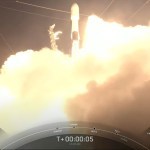
CAPE CANAVERAL, Fla. — A SpaceX Falcon 9 rocket launched 60 Starlink internet satellites into orbit early Sunday (May 9) and then stuck a landing at sea to cap a record 10th flight for the company’s reusable booster.
The veteran Falcon 9 rocket blasted off before dawn from Space Launch Complex 40 here at Cape Canaveral Space Force Station at 2:42 a.m. EDT (0642 GMT), marking the company’s 14th launch of the year. It was also one for the record books as the flight was this particular booster’s 10th launch and landing attempt. The rocket’s once pristine exterior was almost black, charred by its many trips to orbit and back.
“First time a Falcon rocket booster will reach double digits in flights,” SpaceX CEO Elon Musk wrote on Twitter Saturday before launch.
Related: SpaceX’s Starlink satellite megaconstellation launches in photos
Image 1 of 5[image error]
A SpaceX Falcon 9 rocket carrying 60 Starlink internet satellites launches on a record 10th flight from Space Launch Complex 40 at Cape Canaveral Space Force Station in Florida on May 9, 2021. (Image credit: SpaceX)Image 2 of 5[image error]
A view of SpaceX’s 60 Starlink satellites with a stunning blue Earth below on May 9, 2021. (Image credit: SpaceX)Image 3 of 5[image error]
A think blue arc hints at a coming sunrise over Earth as seen by SpaceX’s Starlink satellites after launch on May 9, 2021. (Image credit: SpaceX)Image 4 of 5[image error]
SpaceX’s Starlink-26 mission satellites are deployed in orbit. (Image credit: SpaceX)Image 5 of 5[image error]
The sun rises over the limb of the Earth as seen in by a camera on SpaceX’s Falcon 9 rocket upper stage during the Starlink 26 mission’s launch. (Image credit: SpaceX)Join our launch chat!
Join the Space.com forums here to discuss SpaceX and space travel. Let the community know what you’re thinking!
The successful liftoff marked the second time SpaceX launched one of its 229-foot-tall (70 meters) workhorse Falcon 9 rockets within the same week, each carrying a full stack of 60 flat-paneled Starlink broadband satellites.
“SpaceX’s first reuse of an orbital class rocket was on the SES-10 mission way back in March of 2017,” Spacex supply chain supervisor Michael Andrews said in a live webcast. “We’ve certainly come a long way since then.”
Approximately nine minutes after liftoff, the rocket’s first stage returned to Earth, touching down on SpaceX’s drone ship “Just Read the Instructions” for a record 10th successful landing.
Onlookers were treated to quite the spectacle as the rocket lit up the pre-dawn sky as it climbed to orbit. Clear skies above Florida’s Space Coast made for prime viewing conditions.
In photos: SpaceX launches, lands 1st reused Falcon 9 rocket
In 2020, SpaceX launched a record 26 rockets, and the company is showing no signs of slowing down. So far this year, the Hawthorne, California-based rocket builder has launched 14 missions. Every one of those launches has been on reused rockets, and most have carried SpaceX’s own Starlink satellites.
Last month, SpaceX celebrated the launch of its third astronaut mission in less than a year as the private spaceflight company delivered a crew of four astronauts to the International Space Station. That mission, called Crew-2, was SpaceX’s first crewed mission to fly on a reused rocket.
Of its 14 missions this year, 11 have carried Starlink satellites into orbit. SpaceX has already filled its initial internet constellation of 1,440 broadband satellites. However, the company has approval to launch thousands more and is relying on its fleet of flight-proven boosters to help it do so.
SpaceX’s 1st ‘Block 5’ Falcon 9 rocket: The launch photos
Reusable rocket milestone[image error]
SpaceX’s veteran Falcon 9 rocket first stage booster is seen after making a record 10th landing on the drone ship Of Course I Still Love You following the Starlink 26 mission launch on May 9, 2021. (Image credit: SpaceX)The booster used in Sunday’s launch, called B1051, is one of SpaceX’s fleet leaders. The veteran flier now has 10 launches and landings under its belt as the company has plans to push its Falcon 9 rockets to the limit. It’s the first booster in SpaceX’s fleet to reach this milestone. (Another booster, B1049, just launched on its ninth mission earlier in the week.)
This Falcon 9 made its debut in 2019, launching an uncrewed Crew Dragon capsule on the Demo-1 mission as part of a test flight for NASA’s Commercial Crew program. The booster also launched a trio of Earth-observing satellites for Canada, a broadband satellite for Sirius-XM and seven different Starlink missions.
SpaceX has been using its previously flown boosters with the most miles to transport its own satellites into space. That way the company can push its fleet of Falcons to the limit while also learning as much about the wear and tear each vehicle receives during launch.
This is the 118th overall flight for Falcon 9, and the 64th flight of a refurbished booster. In fact, every single SpaceX launch so far in 2021 has been on a flight-proven rocket.
In 2018, SpaceX debuted the rocket we see today, a version of Falcon 9 known as Block 5. This more capable Falcon 9 has ushered in an era of rapid reusability for the company, enabling SpaceX to launch more rockets than ever before.
Three years ago, SpaceX CEO and founder Elon Musk told reporters that the company expected each Falcon 9 to fly 10 times with few refurbishments in between flights, and as many as 100 times before retirement.
B1051 is the first to make it to the historic 10-flight milestone, and is expected to fly again, following its successful landing at sea. According to Musk, there doesn’t appear to be a hard limit on the number of times a booster can be reused, so the company will continue pushing each Falcon to its limit.
Having a fleet of flight-proven rockets at its disposal allows SpaceX to keep up with its rapid launch cadence. However, SpaceX chooses to fly its own payload on boosters with a high flight count, saving its newer boosters for paying customers.
Both NASA and the U.S. Space Force recently granted the company approval to fly their payloads on reused rockets, and we saw the first of those missions blast off on April 23, with the launch of Crew-2. (SpaceX has flown other NASA missions on reused boosters, but April’s flight marked the first time a human mission has done so.)
To facilitate reuse, SpaceX outfitted its Falcon 9 with some upgrades previous versions did not have, including a more robust thermal protections system, a more durable interstage (the part that connects the rocket’s first stage to the upper stage), titanium grid fins, and more powerful engines. These key enhancements, along with two drone ships on the same coast, have enabled SpaceX to launch and land more rockets.
SpaceX created its massive internet constellation with one major goal: to provide internet coverage to the world, in particular to those in remote and rural areas. To that end, company engineers designed a fleet of flat-paneled broadband satellites to fly over the Earth, beaming down internet coverage to users who can access the service via a compact user terminal.
With Sunday’s launch success, SpaceX has launched more than 1,600 Starlink satellites into orbit, including some that are no longer operational. This goes beyond the company’s initial quota, which means we should see an official commercial rollout of the Starlink internet service sometime this year.
The company has already proven useful to those in remote areas. SpaceX has connected school districts in Virginia and North Carolina that would otherwise struggle with online learning, as well as the Hoh tribe in Washington State and the Pikangikum nation in Western Ontario.
Starlink review (hands-on): How good is Elon Musk’s satellite internet service?
Currently, Starlink is still in its beta-testing phase with users around the world putting the service through its paces. The company has also opened up its website to begin taking preorders, although service won’t begin right away. Prospective users can go to the company’s website and reserve the service with a $99 deposit right now.
According to company officials, more than 500,000 users have signed up for the burgeoning service so far.
Rocket fairing recoveryBoth of the fairing halves featured in Tuesday’s mission will be recovered by the newest member of SpaceX’s recovery fleet, Shelia Bordelon. The company officially bid farewell to its dynamic duo — GO Ms. Tree and GO Ms. Chief — last month. The twin fairing catchers helped SpaceX pioneer its fairing recovery efforts.
The rocket’s nose cone (also called a fairing), is a piece of clamshell-like hardware that protects the payload as the rocket races through the atmosphere. Once it reaches a certain altitude, the pieces jettison, and fall back to Earth.
Historically, the hardware was discarded in the ocean, never to be used again. However, thanks to onboard parachutes and navigation software, SpaceX began to recover the fairings, either by catching them in a net-equipped boat or scooping them out of the water.
With the help of its onboard crane, the brightly painted Shelia Bordelon will retrieve the fairings from the water and return them to port. From there, they will be refurbished and prepared for their next mission.
Follow Amy Thompson on Twitter @astrogingersnap. Follow us on Twitter @Spacedotcom or Facebook.
The post SpaceX launches 60 Starlink satellites in record 10th liftoff (and landing) of reused rocket, , appeared first on NEWDAWN Blog.
Watch live! SpaceX Falcon 9 rocket launches for 10th time on Starlink mission, ,
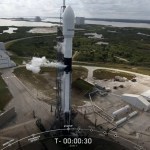
SpaceX is counting down to launch a Falcon 9 rocket on its 10th mission, a record for the company, early Sunday (May 9) and you can watch it live online.
The veteran Falcon 9 will launch 60 Starlink internet satellites into orbit form Space Launch Complex 40 at Cape Canaveral Space Force Station in Florida on Sunday, with liftoff scheduled for 2:42 a.m. EDT (0642 GMT). SpaceX’s webcast will begin about 15 minutes before launch.
Sunday’s launch will mark the 10th flight of the Falcon 9 first stage, which has flown six Starlink missions to date, as well as NASA’s Demo-1 Crew Dragon mission, Canada’s Radarsat mission and the SXM-7 satellite mission for Sirius XM. The booster is one of SpaceX’s most-flown Block 5 Falcon 9 rockets, which made their debut in May 2018.
SpaceX is targeting Sunday, May 9 for launch of 60 Starlink satellites from Space Launch Complex 40 (SLC-40) at Cape Canaveral Space Force Station in Florida. The instantaneous window is at 2:42 a.m. EDT, or 6:42 UTC, and a backup opportunity is available on Monday, May 10 at 2:21 a.m. EDT, or 6:21 UTC.
This will be the tenth flight of the Falcon 9 first stage rocket booster supporting this mission, which previously launched Crew Dragon’s first demonstration mission to the International Space Station, the RADARSAT Constellation Mission, SXM-7, and six Starlink missions. Following stage separation, SpaceX will land Falcon 9’s first stage on the “Just Read the Instructions” droneship, which will be located in the Atlantic Ocean. Both of Falcon 9’s fairing halves previously flew on the GPS III Space Vehicle 04 mission.
A live webcast of this mission will begin about 15 minutes prior to liftoff.
Find out what the astronauts and cosmonauts aboard the International Space Station are up to by tuning in to the “ISS Live” broadcast. Hear conversations between the crew and mission controllers on Earth and watch them work inside the U.S. segment of the orbiting laboratory. When the crew is off duty, you can enjoy live views of Earth from Space. You can watch and listen in the window below, courtesy of NASA.
“Live video from the International Space Station includes internal views when the crew is on-duty and Earth views at other times. The video is accompanied by audio of conversations between the crew and Mission Control. This video is only available when the space station is in contact with the ground. During ‘loss of signal’ periods, viewers will see a blue screen.
“Since the station orbits the Earth once every 90 minutes, it experiences a sunrise or a sunset about every 45 minutes. When the station is in darkness, external camera video may appear black, but can sometimes provide spectacular views of lightning or city lights below.”
Follow us on Twitter @Spacedotcom and on Facebook.
Join our Space Forums to keep talking space on the latest missions, night sky and more! And if you have a news tip, correction or comment, let us know at: community@space.com.
The post Watch live! SpaceX Falcon 9 rocket launches for 10th time on Starlink mission, , appeared first on NEWDAWN Blog.
May 8, 2021
Dogecoin is crashing while Elon Musk is on Saturday Night Live , Elizabeth Lopatto


While Elon Musk hosted Saturday Night Live, Dogecoin investors sold. When SNL first went live, the cryptocurrency hovered around 69 cents (nice). But as the show wore on, the price dropped. As of this writing, it is worth 56 cents, a 12 percent plunge.
Me watching SNL crack cringe jokes while my portfolio plummets #DogeSNL pic.twitter.com/OBiA1d3Pe1
— (@N3KO1030) May 9, 2021
There was a slight recovery when Musk — on “Weekend Update,” SNL’s parody news program — explained to a bewildered Michael Che and Colin Jost what Dogecoin was. (“A hustle,” Che finally said, knowingly.) He also called himself the “Dogefather.”
As if to celebrate, trading platform Robinhood promptly crashed for cryptocurrency users. Earlier this week, R…
The post Dogecoin is crashing while Elon Musk is on Saturday Night Live , Elizabeth Lopatto appeared first on NEWDAWN Blog.
Dogecoin is crashing while Elon Musk is on Saturday Night Live,

While Elon Musk hosted Saturday Night Live, Dogecoin investors sold. When SNL first went live, the cryptocurrency hovered around 69 cents (nice). But as the show wore on, the price dropped. As of this writing, it is worth 56 cents, a 12 percent plunge.
Me watching SNL crack cringe jokes while my portfolio plummets #DogeSNL pic.twitter.com/OBiA1d3Pe1
— (@N3KO1030)
There was a slight recovery when Musk — on “Weekend Update,” SNL‘s parody news program — explained to a bewildered Michael Che and Colin Jost what Dogecoin was. (“A hustle,” Che finally said, knowingly.) He also called himself the “Dogefather.”
As if to celebrate, trading platform Robinhood promptly crashed for cryptocurrency users. Earlier this week, Robinhood tweeted, “We’re all paws on deck, all weekend. [rocket emoji]” (I need the S-1.) A month ago, the trading platform crashed during a Dogecoin rally.
Update: We’re currently experiencing issues with crypto trading. We’re working to resolve this as soon as possible. For the latest updates, check https://t.co/ZS733G6N1J
— Robinhood Help (@AskRobinhood)
The post Dogecoin is crashing while Elon Musk is on Saturday Night Live, appeared first on NEWDAWN Blog.
Elon Musk’s SNL monologue poked fun at his public persona, Kim Lyons

 Elon Musk on Saturday Night Live | NBC
Elon Musk on Saturday Night Live | NBCElon Musk opened his hosting gig on Saturday Night Live by acknowledging his public comments get him in trouble. “Sometimes after I say something I have to say ‘I mean that,’” he said. He pointed to his “69 days after 4/20 again haha” tweet, but didn’t mention the 2018 tweet that got him in hot water with the Securities and Exchange Commission.
Musk said he was the first person with Asperger’s to host SNL — something he hasn’t said publicly before. It did not appear he was joking, but it was a bit difficult to be sure how sincere Musk was being, given his history as both an internet troll and someone who doesn’t always know how to deliver a joke.
The Tesla and SpaceX CEO joked that people sometimes don’t know what to expect from him. “I…
The post Elon Musk’s SNL monologue poked fun at his public persona, Kim Lyons appeared first on NEWDAWN Blog.
Elon Musk’s SNL monologue poked fun at his public persona,

Elon Musk opened his hosting gig on Saturday Night Live by acknowledging his public comments get him in trouble. “Sometimes after I say something I have to say ‘I mean that,'” he said. He pointed to his “69 days after 4/20 again haha” tweet, but didn’t mention the 2018 tweet that got him in hot water with the Securities and Exchange Commission.
Musk said he was the first person with Asperger’s to host SNL — something he hasn’t said publicly before. It did not appear he was joking, but it was a bit difficult to be sure how sincere Musk was being, given his history as both an internet troll and someone who doesn’t always know how to deliver a joke.
The Tesla and SpaceX CEO joked that people sometimes don’t know what to expect from him. “I reinvented electric cars and I’m sending people to Mars on a rocket ship,” Musk said. “Did you think I was going to be a chill, normal dude?”
[embedded content]Musk said his famous appearance on Joe Rogan’s podcast where he smoked weed wasn’t his usual habit. And he appeared to relish the live audience: “I could say something truly shocking like ‘I drive a Prius.'”
He also said the name of his youngest child, spelled X AE A-12 is “pronounced ‘cat running across keyboard.'”
Musk’s mother Faye also made an appearance during the monologue. “I’m excited for my Mother’s Day gift, I just hope it’s not Dogecoin,” she said.
To which Elon replied “it is.”
The post Elon Musk’s SNL monologue poked fun at his public persona, appeared first on NEWDAWN Blog.
Every other EV brand showed up to Elon Musk’s SNL,
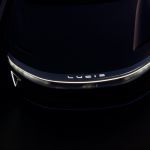
At least five of Tesla’s competitors bought ad time during Saturday Night Live hosted by Elon Musk, using the billionaire’s appearance to sell their own. non-Tesla EVs.
Commercials for the Audi E-tron, Ford Mustang Mach-E, Volkswagen ID 4, and Lucid Air all aired within the first 30 minutes of SNL. Lucid Motors, a company founded by Peter Rawlinson, the former head engineer of the Tesla Model S who frequently clashes with Musk, teased its commercial earlier in the week. It was its debut commercial for the Lucid Air, a claimed 500-mile EV due later this year.
Guess who is making an appearance during #SNL tomorrow? #LucidAir #Firstto500 pic.twitter.com/aXquKSEND6
— Lucid Motors (@LucidMotors)
In his opening monologue, Musk noted he’s the guy who made electric vehicles popular. The commercials were intended to remind the audience that Tesla isn’t the only name in the game anymore.
It wasn’t just EV companies either. According to Adweek, Sierra Space, a rival of Musk’s SpaceX, purchased several spots that will run on YouTube clips of Musk’s appearance on SNL. The company is also targeting non-SNL Musk clips on the platform.
We’ll update this post if more related commercials air.
The post Every other EV brand showed up to Elon Musk’s SNL, appeared first on NEWDAWN Blog.
Every other EV brand showed up to Elon Musk’s SNL, Andrew J. Hawkins
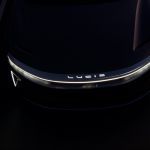

At least five of Tesla’s competitors bought ad time during Saturday Night Live hosted by Elon Musk, using the billionaire’s appearance to sell their own. non-Tesla EVs.
Commercials for the Audi E-tron, Ford Mustang Mach-E, Volkswagen ID 4, and Lucid Air all aired within the first 30 minutes of SNL. Lucid Motors, a company founded by Peter Rawlinson, the former head engineer of the Tesla Model S who frequently clashes with Musk, teased its commercial earlier in the week. It was its debut commercial for the Lucid Air, a claimed 500-mile EV due later this year.
Guess who is making an appearance during #SNL tomorrow? #LucidAir #Firstto500 pic.twitter.com/aXquKSEND6
— Lucid Motors (@LucidMotors) May 7, 2021
In his opening monologue,…
The post Every other EV brand showed up to Elon Musk’s SNL, Andrew J. Hawkins appeared first on NEWDAWN Blog.
An out-of-control Chinese rocket has re-entered Earth’s atmosphere,
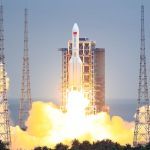
The 100-foot-tall, 22-metric-ton Chinese Long March 5B rocket that launched the first chunk of Beijing’s new space station last month has reentered Earth’s atmosphere near the Maldives, China’s Manned Space Engineering Office reported.
Scientists, amateur satellite trackers and the Pentagon had been monitoring the dead rocket stage’s location for over a week amid fears it would reenter over a populated area. US Space Command, which helps locate space junk and man-made satellites in Earth orbit, said the rocket “re-entered over the Arabian Peninsula at approximately 10:15 p.m. EDT,” adding it was unknown if the debris impacted land or water.
“Everyone else following the #LongMarch5B re-entry can relax. The rocket is down,” tweeted Space Track, a website that had been using Space Command data to publish the rocket stage’s whereabouts. The last bits of data on the rocket’s location came as it was soaring over Saudi Arabia, Space Track added.
Everyone else following the #LongMarch5B re-entry can relax. The rocket is down. You can see all relevant information and updates here on Twitter/Facebook, so there is no need to keep visiting the space-track dot org website.
— Space-Track (@SpaceTrackOrg)
While most expendable rocket stages usually crash harmlessly into the ocean after pushing a separate rocket booster into orbit, China’s Long March 5B is built differently. Its entire first stage entered low-Earth orbit on April 29th to deliver its payload, a Tianhe module that will serve as living quarters for China’s new space station in the next few years.
The rocket stage, uncontrollable after delivering the space station module, then stayed in orbit for more than a week, gradually falling in altitude before reentering Saturday night. The reentry prompted rebuke from NASA administrator Bill Nelson.
“It is clear that China is failing to meet responsible standards regarding their space debris,” said Nelson, who took office as NASA’s 14th administrator on May 3rd. “It is critical that China and all spacefaring nations and commercial entities act responsibly and transparently in space to ensure the safety, stability, security, and long-term sustainability of outer space activities.”
China’s Foreign Ministry spokesman Wang Wenbin played down the rocket’s threat to populated areas while it was in orbit, telling reporters on May 7th that it would mostly burn up in the atmosphere and “the probability of this process causing harm on the ground is extremely low,” according to Reuters.
It’s not the first time a Chinese rocket has reentered Earth’s atmosphere uncontrolled. Tiangong-1, China’s first prototype space station, launched in 2011, reentered just seven years later and broke up in the atmosphere over the South Pacific Ocean.
The post An out-of-control Chinese rocket has re-entered Earth’s atmosphere, appeared first on NEWDAWN Blog.
Space junk removal is not going smoothly, ,
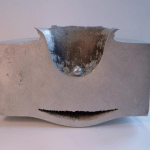
Despite promising technology demonstrations, there is no one-size-fits-all solution for the growing problem of taking out the orbital trash
The post Space junk removal is not going smoothly, , appeared first on NEWDAWN Blog.



